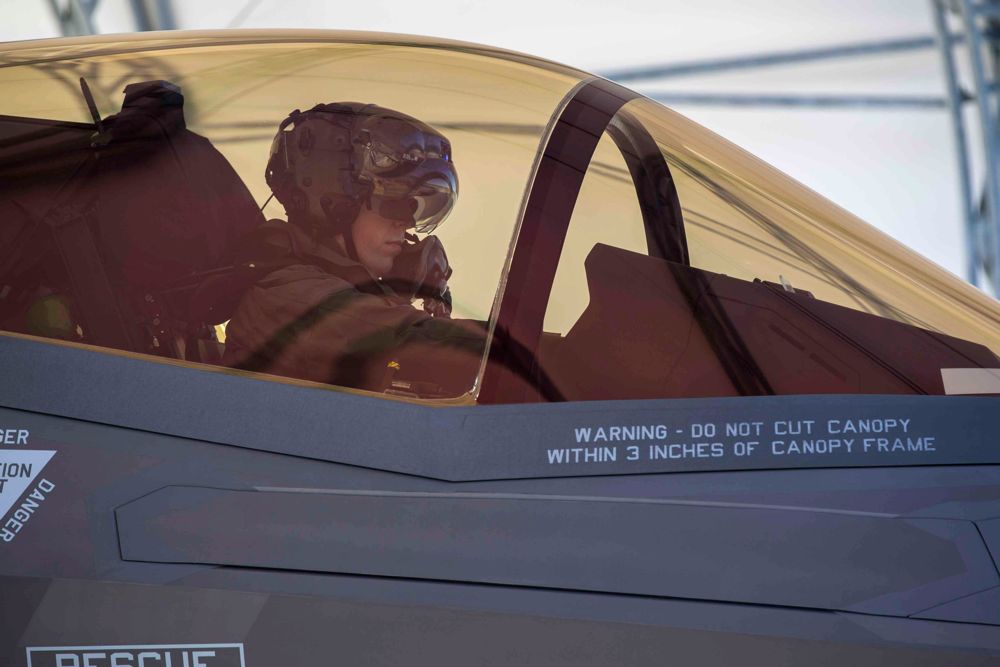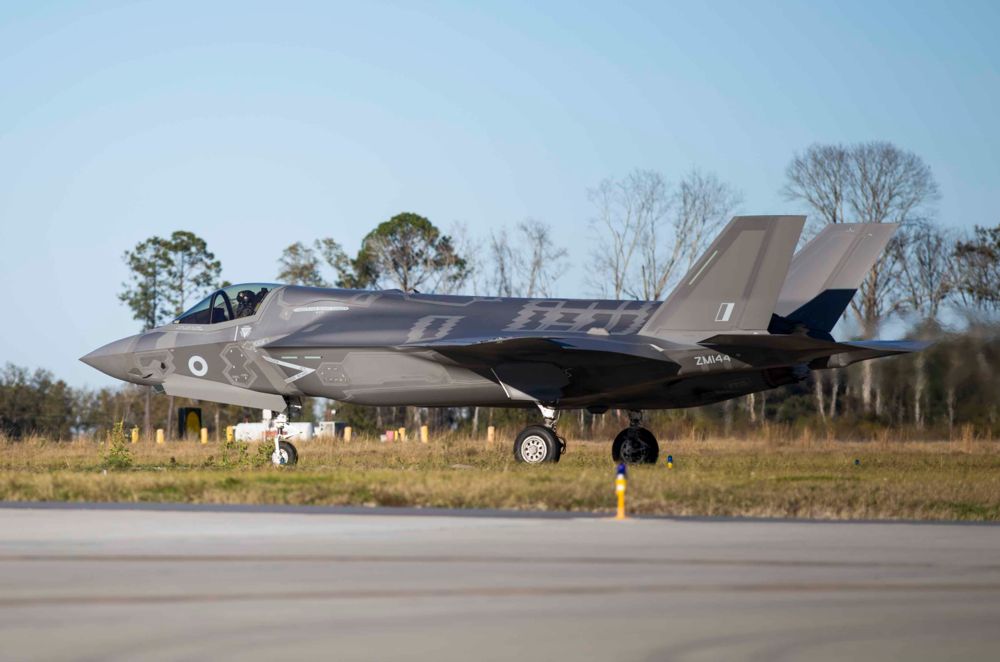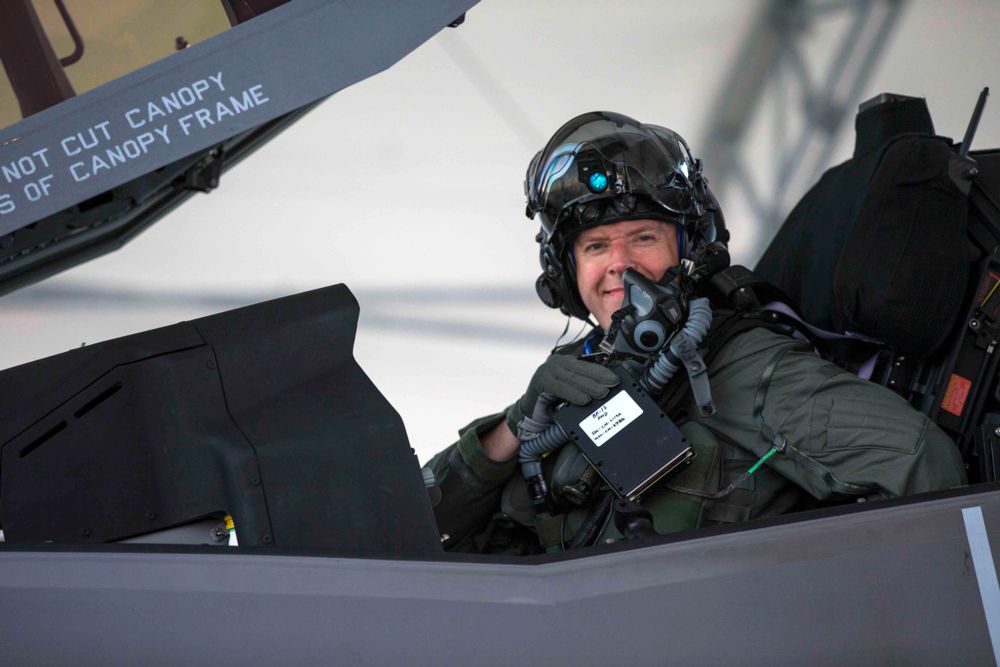The pilot destined to command the F-35B Lightning Operational Conversion Unit (OCU) explains the new aircraft and the training of those who will fly and engineer it.
Wing Commander Scott Williams will become Officer Commanding 207 Squadron when it reforms in the summer of 2019. He is currently the UK’s Senior National Representative at Marine Corps Air Station Beaufort, the South Carolina base where more than 150 RAF and Royal Navy personnel are learning to fly, fight and engineer the F-35B. On 13 December last year, he also became the latest pilot to fly the Lightning.

“My first flight in the F-35B was incredible and certainly exceeded expectations. On take-off, the responsiveness and power of the engine were extremely impressive and the jet accelerated rapidly without afterburner. Once airborne, I was immediately struck by how smooth and agile the aircraft was to fly, and how seamlessly its sensors and mission systems gave me the information I needed – a real testament to the aircraft’s design. There were many airborne exercises to get through but I can confidently say that the Lightning does a great job of easing the workload in the cockpit and is a real pleasure to fly.”
Wing Commander Scott Williams
Simulators
With no two-seat F-35s the training of pilots is heavily reliant upon simulators as Wg Cdr Williams explained:
“Traditionally we train with the instructor in the back seat and the student in the front seat. If things don’t quite go according to plan then there’s someone over your shoulder who can take control, provide help and advice, and encourage the student to try again."
Wing Commander Scott Williams
“We can’t do that in the live environment on F-35 so the synthetic environment becomes crucial. Fortunately, the F-35 Full Mission Simulator allows you to train everything from the most basic skills, all the way up to teaching and assessing students in tactical formations against potent enemy threats.”
“Many legacy simulators have lacked the fidelity needed to train to high-end tactics, techniques and procedures but contemporary simulators can, and in future, we’ll use networks to train collectively in large virtual environments. That’s where we’re heading.”
OCU
This summer F-35s and personnel of 617 Squadron will arrive at RAF Marham. They will then undergo an intense phase of training to be able to declare a land-based Initial Operational Capability by the end of the year. The Lightning OCU, 207 Squadron will follow and occupy new buildings adjacent to the new Dambusters facilities at the Norfolk base in due course.
“We’re not just training pilots on the OCU. Cutting-edge facilities being built at RAF Marham, including our ‘School House’, will train engineers and ops support personnel destined for the Lightning Force. Next year we take what we’ve learned in the USA to the UK and re-form a historic squadron that will begin training all our future Lightning sailors and airmen. It’s a significant and exciting challenge.”
Wing Commander Scott Williams
In the UK, 207 Squadron will initially operate five to six aircraft and within about two years have a full complement of eight F-35B. Until then UK personnel will remain an integral part of VMFAT-501, 'Warlords', the sole US Marine Corps F-35B training squadron. Commanded by a USMC Lieutenant Colonel, the UK provides a third of the unit’s manpower and a significant number of its instructor pilots.

“That’s a great relationship. Every day, US and UK personnel are flying and engineering each other’s aircraft in one large ‘pool’, which is brilliant" said Wg Cdr Williams. “Ultimately, it means the UK and USMCS can train faster than would otherwise be possible, and we learn a great deal more from each other’s experiences of operating this new jet.”
Engineers and mission support
At the moment, Lightning engineers and mission support personnel are trained at Eglin AFB, Florida. The engineering personnel also use synthetic trainers and learn on equipment that is a step change from what they were taught on at RAF Cosford as Wg Cdr Williams explained:
“When you start peeling back what’s in this aeroplane it’s definitely next-generation stuff, right down to piping conduits and how your repair defects. There are some real engineering improvements from the ‘old school’; it’s a huge jump for the guys and girls on the team.”

One of the innovations of F-35 is the Autonomic Logistics Information System (ALIS) which gives F-35 operators the ability to plan, maintain and sustain the aircraft’s systems. Wg Cdr Williams: “The engineers pull off the joint technical data from the ALIS system and it tells them ‘if this happens, this is how you fix it’. They follow the process and ALIS ticks the aircraft as ready to fly. When all the ticks are completed the aircraft can be released for flight.”
“In so many ways it’s a different way of doing things that we’ve done for Tornado, Harrier and, to an extent, the Typhoon as well. The F-35 is certainly a game-changing capability for the UK but it wouldn’t happen without a team of dedicated Airmen, Sailors and Marines who work hard every day toward the mission. It’s a huge privilege to be part of that.”
Wing Commander Scott Williams




